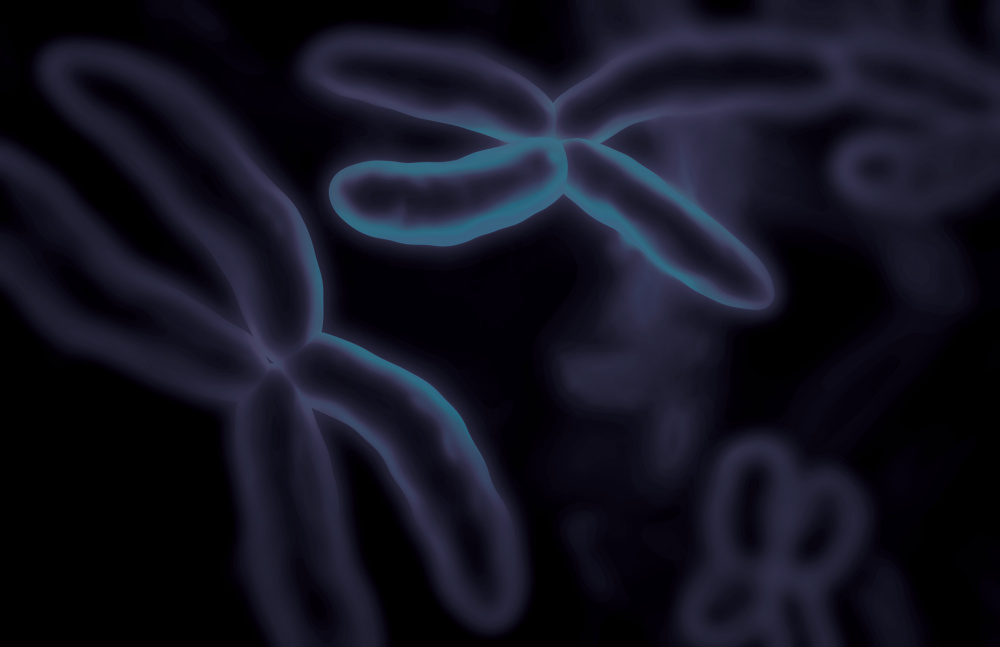Chromosomes, the coiled strands of DNA that reside in the cell nucleus, are the main repository of genetic information within cells. When chromosomes don’t form correctly during cell division, the result can be a misspelling or glitch in the genetic code, potentially allowing cells to proliferate continuously – a hallmark of cancer. Most cancer cells contain more than one kind of chromosomal abnormality.
One type of abnormality is called a chromosomal rearrangement. This occurs when a portion of a chromosome breaks off and reattaches at the wrong location. This can result in “hybrid genes,” which consist of genes fused together at the points of breakage and reattachment. Researchers have identified more than 200 hybrid genes, many of which involve genes linked to cancer. Chromosomal rearrangements also can affect sections of DNA that control gene activity, causing genes involved in cell division to go into hyperdrive, or even disabling genes that normally rein in cell growth.
Incorrect copying of chromosomes can lead to other problems as well. Genes that should be present may be deleted or deactivated. If such genes are tumor-suppressor genes, whose job is to keep cell division in check, their absence or idleness can remove critical restraints on growth. The opposite problem – a surplus or overactivity of some genes – can be equally hazardous if the affected genes help promote cell growth and division.
Chromosomal abnormalities can also hobble genes involved in repairing damaged DNA. If damage occurs in a gene that normally drives or constrains cell growth, DNA-repair genes are often able to fix the problem so growth doesn’t veer out of control. But if the repair genes themselves don’t work properly, there may be little to prevent this loss of control.

Under a microscope, one of the most striking features of cancer cells is that they often have the wrong number of chromosomes in their nuclei, a condition known as aneuploidy. The role of aneuploidy in cancer isn’t clear, but some researchers have suggested that, by increasing the diversity of cell types within tumors, aneuploidy may help cancer cells acquire gene mutations that help them survive, grow, and multiply. One paper from 2015 called aneuploidy in cancer a “jackpot of chaos.”
Researchers led by Dana-Farber’s David Pellman, MD, have shown that aneuploidy can generate not only abnormal chromosome number but also massive chromosome rearrangement. This sudden, isolated shuffling of genetic material, known as chromothripsis, is a major driver of the abnormal genomic architecture of cancer – occurring in 65 percent of pancreatic cancers, for example.
In a 2015 paper, Pellman and his colleagues, including Dana-Farber’s Matthew Meyerson, MD, PhD, and Cheng-Zhong Zhang, PhD, now at Harvard Medical School, demonstrated how chromothripsis can occur. Using live video images of single cells and technology for sequencing the genomes of those cells – a technique called “Look-Seq” – they traced chromothripsis to a glitch in cell division that can cause one of the newly formed daughter cells to be short one chromosome, while the other daughter cell inherits an extra one.
The surplus chromosome doesn’t always join the other chromosomes in the cell nucleus; often, it’s stranded elsewhere in the cell and acquires its own tiny membrane, forming a “micronucleus.” After cell division, the micronucleus can rupture, potentially exposing the chromosome inside to damage. The chromosome is then absorbed into the nucleus, knitting its imperfect DNA into the cell’s genetic programming.
